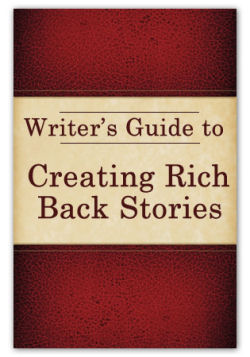|
Simpering
misses and damsels in distress seem to be out of fashion these days.
Rarely do I pick up a book and read about a heroine who is sickly,
pale, and teary-eyed all the time. Instead, we have strong female
leads—some magical mixture of Lara Croft, Mother Teresa, and Maya
Angelou—who populate our fiction.
While I’m all for strengthening
our readers’ views of females, is there such a thing as overdoing it?
Can you have a heroine is who is too dominant?
Dominance in the psychology
world is on a continuum, low to high. Abraham Maslow did a lot of
research in the 1930s and ’40s on human sexuality, and he concluded
that this continuum exists because of similar batches of traits he
found in the women he interviewed.
High Dominance Women
Unconventional
Less religious
Less tolerant of stereotypes
Extroverted
Sexually adventuresome
Less anxious
Less jealous
Less neurotic
Low Dominance Women
Conventional
Religious
Conforming to stereotype
Introverted
Sexually inhibited
More neurotic
His
findings were that High Dominance women were attracted to High
Dominance men—aggressive, self-confident, highly masculine, and
self-assured. Low Dominance women were attracted to men who were kind,
friendly, gentle, faithful, and showed a love for children.
Medium Dominance women fell in
between, as you might conclude, but they made up Maslow’s largest
group. These are your romantics. They want love to find them, and they
want it coming from a white knight. Flowers, chocolates, moonlit
walks—these are the things they live for. In short, they want Mr.
Right.
But
without fail, the
women in all three groups were attracted to men more dominant than they
were. A woman is rarely attracted to someone who seems to be
her “equal.” She wants someone more than
herself—someone to make her feel feminine. It doesn’t matter how
dominant you make your heroine. She will just look for a man even more
dominant than she is.
|
Why
is this important for
writers?
The more dominant your heroine
is, your hero will have to be even more so.
This fact might cause you to
pause and worry over the feasibility of the attraction between your
main characters. Good. But don’t fret if you’ve got
two firecrackers lighting up the pages, either.
While it’s true that most woman
are not High Dominance (in reality, they make up the outlying five
percent on the Bell Curve in Maslow’s research), most readers
want to read about main characters who are more dominant than they are.
This dominance could take
several manifestations, so you can be creative. We want to read about
people who are smarter, faster, wittier, and stronger than we are. We
like to imagine ourselves in their shoes and fantasize that we are
taking down the bad guy or winning the lady over.
To close, I’ll leave you with
two equations to keep in the back of your mine when writing:
Female Reader Dominance <
Heroine Dominance < Hero Dominance
Male Reader Dominance <
Hero Dominance


|